Disk Recovery
Posted: February 7, 2011
Threat Metric
The following fields listed on the Threat Meter containing a specific value, are explained in detail below:
Threat Level: The threat level scale goes from 1 to 10 where 10 is the highest level of severity and 1 is the lowest level of severity. Each specific level is relative to the threat's consistent assessed behaviors collected from SpyHunter's risk assessment model.
Detection Count: The collective number of confirmed and suspected cases of a particular malware threat. The detection count is calculated from infected PCs retrieved from diagnostic and scan log reports generated by SpyHunter.
Volume Count: Similar to the detection count, the Volume Count is specifically based on the number of confirmed and suspected threats infecting systems on a daily basis. High volume counts usually represent a popular threat but may or may not have infected a large number of systems. High detection count threats could lay dormant and have a low volume count. Criteria for Volume Count is relative to a daily detection count.
Trend Path: The Trend Path, utilizing an up arrow, down arrow or equal symbol, represents the level of recent movement of a particular threat. Up arrows represent an increase, down arrows represent a decline and the equal symbol represent no change to a threat's recent movement.
% Impact (Last 7 Days): This demonstrates a 7-day period change in the frequency of a malware threat infecting PCs. The percentage impact correlates directly to the current Trend Path to determine a rise or decline in the percentage.
| Threat Level: | 10/10 |
|---|---|
| Infected PCs: | 21 |
| First Seen: | February 7, 2011 |
|---|---|
| Last Seen: | August 17, 2022 |
| OS(es) Affected: | Windows |
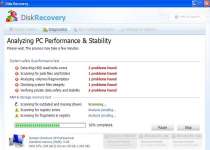 One in a new line of utterly fake system optimizers, Disk Recovery is a rogue created for the singular purpose of stealing money from the victim of the infection. Despite a pretense of being able to defragment your hard drive and perform other useful tasks, Disk Recovery is only designed to take over your computer and persuade you to give criminals your money. Don't follow along with Disk Recovery's plan, and treat it with the same wary disdain that you would have for any more openly hostile virus.
One in a new line of utterly fake system optimizers, Disk Recovery is a rogue created for the singular purpose of stealing money from the victim of the infection. Despite a pretense of being able to defragment your hard drive and perform other useful tasks, Disk Recovery is only designed to take over your computer and persuade you to give criminals your money. Don't follow along with Disk Recovery's plan, and treat it with the same wary disdain that you would have for any more openly hostile virus.
Disk Recovery's Context in the Malware Industry
A victim being unaware of the danger is the chief reason why Disk Recovery and rogue programs like it are able to profit. Disk Recovery goes by just one other known alias, DiskRecovery, but it isn't that different from dozens of other fake system optimizers already out there. It bears a particularly strong resemblance to such malware as HDD Low, Memory Fixer, and System Defragmenter. As a recent spin on an old scam, just knowing about Disk Recovery's existence greatly hampers its ability to victimize you.
Disk Recovery's Injection
Disk Recovery may be spread by Trojans that download it without announcing the fact to the user. Disk Recovery can also be acquired by using a fake online scanner that uses your permission to download malware. Its central form of reproduction, however, is neither of these.
The primary means of Disk Recovery's spread is through redirecting the user from search results and legitimate sites towards unsafe websites. These websites will try to get your computer to download Disk Recovery without you being aware of it – often through Trojan in misleading advertisements. This is done under the table, so the user will not try to stop it until it's already on their system.
Signs of Disk Recovery Taking Advantage of You
Once ready to reveal itself, Disk Recovery expresses itself very consistently and unpleasantly. Disk Recovery will attempt to launch into a scan automatically, and in doing so will find quite a lot of errors. Don't have a fit; these errors are wholly made up, and Disk Recovery isn't even able to detect real problems in your system. Besides memory and hard drive error messages, you may also see error messages when attempting to delete or run certain files or programs. Amusingly enough, these scare tactics go to such extremes that anyone with a little computer know-how is easily able to identify the severity as grossly overstated at best. Even a novice who sees a message about a hard drive apparently missing or RAM memory usage 'critically high' for no obvious reason will be able to see the blatant falsehood in these errors.
The Disk Recovery Trap Snaps Shut (But Hopefully Not with You in It)
All of the problems that Disk Recovery causes are done with the intention of getting you to shell out money for its full, registered version. This version is equally non-beneficial to have on your system, and paying may cause your credit card to be seriously misused. Stay out of this trap and clean Disk Recovery off your computer with all due haste, as you gain nothing by keeping it around. While you do this, watch out for related infections, as there's a high probability of other malware also being on your computer.
Technical Details
File System Modifications
Tutorials: If you wish to learn how to remove malware components manually, you can read the tutorials on how to find malware, kill unwanted processes, remove malicious DLLs and delete other harmful files. Always be sure to back up your PC before making any changes.
The following files were created in the system:%AllUsersProfile%\Application Data\lrzu0iQS.exe
File name: lrzu0iQS.exeSize: 388.09 KB (388096 bytes)
MD5: fba7546ea38fa35ad86df93c87b254ba
Detection count: 7
File type: Executable File
Mime Type: unknown/exe
Path: %AllUsersProfile%\Application Data
Group: Malware file
Last Updated: August 17, 2022
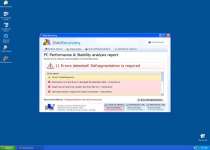
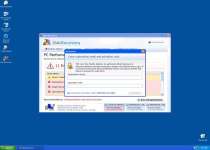
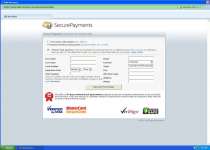
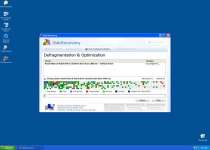
Leave a Reply
Please note that we are not able to assist with billing and support issues regarding SpyHunter or other products. If you're having issues with SpyHunter, please get in touch with SpyHunter customer support through your SpyHunter . If you have SpyHunter billing questions, we recommend you check the Billing FAQ. For general suggestions or feedback, contact us.